
Getting to the top of any field is difficult, but it is even harder to stay at the top for a long time. Flutter was introduced by Google as a cross-platform app development framework in 2017. Quickly after its release, the SDK became the most popular choice for cross-platform app development.
But where does it stand now in 2025? Eight years is a long time, particularly in the tech industry, where things change fast and many promising technologies turn out to be ephemeral. The short answer: still at the very top. Flutter has continuously evolved as a reliable cross-platform development framework for the modern needs of developers.
In this article, we’ll prove to you why Flutter app development is still the best choice for making cross-platform apps by highlighting the advantages of using Flutter in 2025.
What numbers say: Flutter’s popularity in 2025
Advantages of Flutter are best reflected in the number of developers who are using it. As of March 2025, Flutter had around 2.8 million monthly active developers, using the platform in some way in their daily workflows.
There are also estimated 600K Flutter-based apps released on Android, iOS, Windows, and other operating systems. It is also among the top 10 most popular open-source projects on GitHub. And there has been a steady increase in Flutter jobs in the market compared to last year.
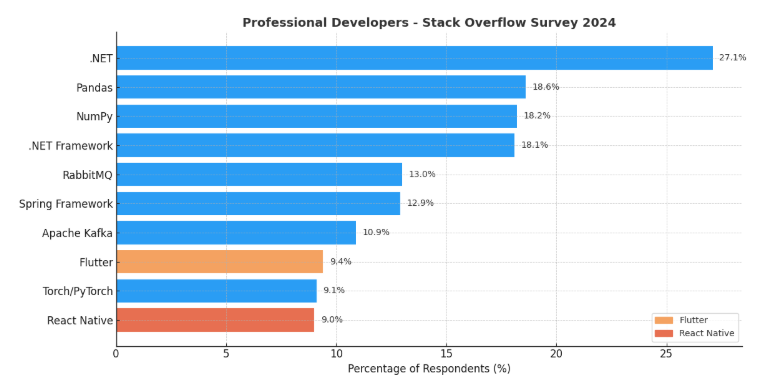
Source: “Other frameworks and libraries category” 2024 Stack Overflow Survey
Moreover, Flutter also led its closest competitor, React Native, in 2024 Stack Overflow Survey of professional developers. And lastly, Google Trends shows a clear picture of what people are interested in for cross-platform app development.
Flutter has consistently ranked above React Native in Google search for the last five years.
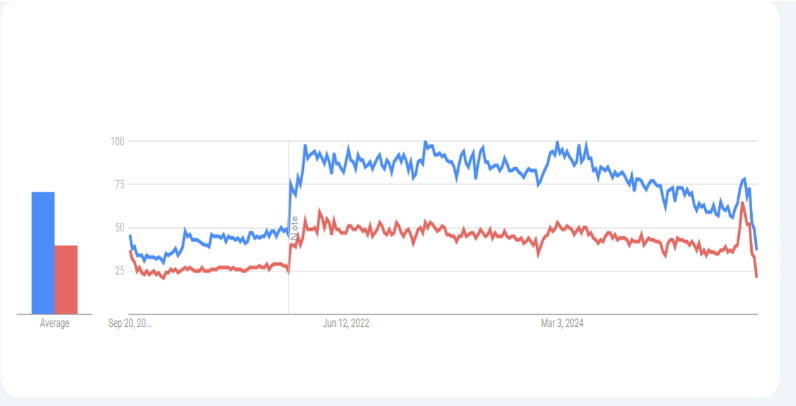
Source: Google Trends popularity of Flutter (blue) and React Native (red) since 2019–2024
Flutter advantages for cross-platform development in 2025
We have shown with facts that Flutter cross platform apps are more popular than ever. Those numbers are a solid reason why you should choose Flutter in 2025. However, if you’re still ambivalent, perhaps some real-world benefits of Flutter will help you make your mind.
Here are some proven advantages of using Flutter:
1. Flutter 4.0 and the latest features
One of the biggest advantages of Flutter is its continuous backing by Google. The tech giant has been rolling out new updates and Flutter framework features regularly. Flutter 4.0 is the latest version of the SDK, which will mark a major milestone in the platform’s history.
Flutter 4.0 hasn’t been released yet, but it is expected to be released by the end of 2025 or the start of next year. However, some major improvements in the Flutter framework have already been confirmed.
The major improvement is in the framework’s rendering engine, Impeller, which will be upgraded to support dynamic theming, low-latency rendering, and optimized graphics for modern GPUs. Dart, the coding language used in Flutter development, will also be upgraded to version 3.2.
Dart 3.2 will offer better null-safety checks and faster ahead-of-time (AOT) compilation. Flutter is also making great improvements in desktop and web app development.
The platform lagged behind its competitors in these two domains. But Flutter 4.0 is expected to be much more mature for creating desktop and web apps.
2. Same UI and Business Logic in All Platforms
Most cross-platform frameworks allow for code sharing between target platforms. However, Flutter is different because it allows the sharing of UI code and UI itself.
That’s a big plus of Flutter compared to other frameworks. For example, let’s consider how UI rendering is usually implemented in most cross-platform frameworks:
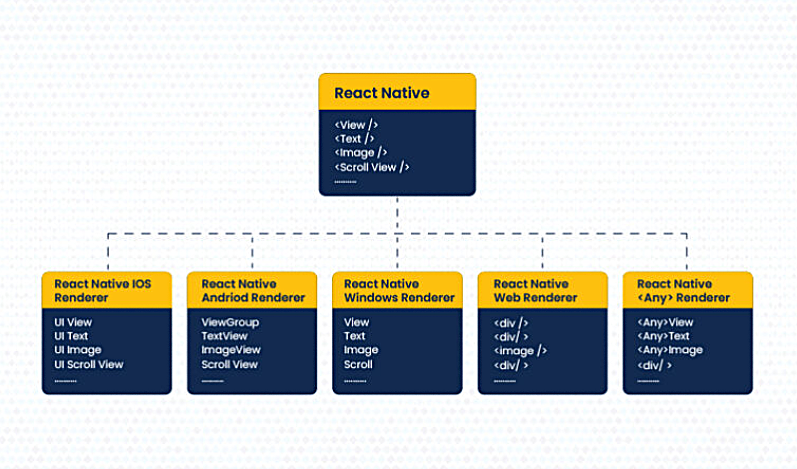
It seems very easy for a cross-platform framework to generate an app that looks native on every platform, but complexities are involved.
Most frameworks rely on platform-specific components for rendering, requiring a property mapping layer for the platform and a framework widget data synchronization, which complicates the process of developing, especially when it is time to map the animations into a platform-specific widget call.
3. Fast Development Due to “Hot Reload” Feature
The hot reload feature is an awesome tool that significantly accelerates app development. It was designed by a team of engineers at Google to increase developer productivity and ensure quick change-making.
The convenience of hot reload makes it very easy to experiment, build the UI, add features, and even fix bugs.
Updated Source code files are injected into the Dart Virtual Machine, which in turn rebuilds the widget tree automatically after updating classes with new fields and versions of functions.
Hot reload allows developers to see changes in their code in real time with a sub-second delay from saving the code until it appears on the same screen.
Furthermore, Flutter 4.0 is also coming with Hot Restart 2.0. Hot Restart is a similar feature to Hot Reload, but it is needed to make bigger changes that Hot Reload can’t handle. Hot Restart 2.0 will make app-wide changes even faster, as you can pick up right where you left off.
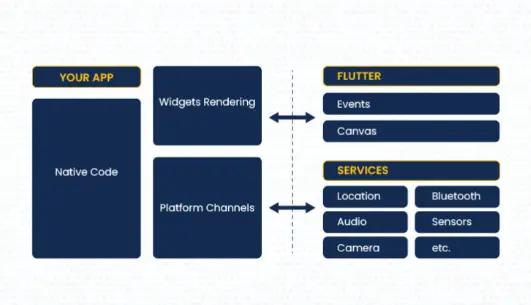
4. Highly Customizable UI Design
Even for complex UI designs, Flutter makes the customization process easy, which is sometimes not possible with native platforms.
For example, a shared element transition, shapes, colors, and shadow manipulation, clipping, and transformation can be done easily with Flutter. This makes the work more versatile without adding weight to the workload. Here is an illustration of how it works:
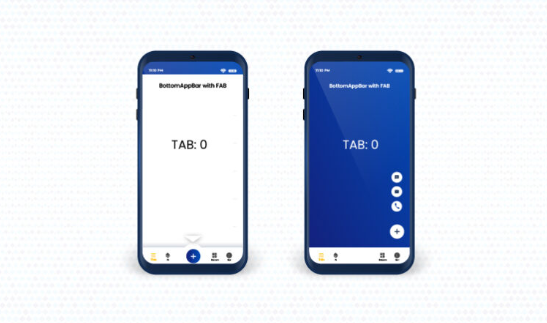
Flutter developers use wide variety of graphics and animation libraries to create high-fidelity user interfaces that are slick, visually stunning, and immediately responsive to touch.
Apps are also adaptable to any size or aspect ratio and beautiful on phones and tablets. Flutter also supports 3D graphics, allowing for the use of standard 3D tools like Blender to create models and 3D meshes.
These can be imported into Flutter, programmed, and used much like other code components.
5. A Wide Variety of Rich Widgets
Widgets are really useful benefits of Flutter. In Flutter apps, widgets are the building blocks for constructing them. They are then used to make the app, like a button, text, and input fields. Flutter’s widgets follow Material Design guidelines from Android and Cupertino style from Apple.
One can easily customize the interface that user want by using these widgets, which is usually the most time-consuming part of cross-platform development.
6. Access to Native Features
Many businesses cannot develop native applications and hence use mobile web pages or PWAs as alternatives, which, in turn, may often fail to meet expectations. That’s where Flutter fits in.
Flutter can achieve native app performance without additional charge, utilizing only one framework, free of charge, and easy. Most other cross-platform frameworks do not work using intermediate code representations or interpretations.
Instead, Flutter apps build directly to machine code, thus getting rid of any performance bugs associated with interpretation processes.
7. Publicly Accessible
Flutter is open source and, therefore, opens a window to the original development process; you get direct access to the codebase for your project.
The community is thriving and willing to support you in building your app. You can give back by sharing your knowledge and bug reporting.
This approach creates a perpetual improvement and innovation culture, making Flutter a dynamic and exhilarating digital workplace platform.
Moreover, Flutter receives strong support and ongoing development from Google as the company has come to rely on the framework. Google has a strong team of developers that ensures any bugs or issues with Flutter are sorted out immediately.
Furthermore, Google is developing the UI and applications for its multi-platform operating system, Google Fuchsia. This kind of investment means that Flutter users can trust that the framework will be valid and supported in the future.
8. Flutter for AI and ML
Any technology isn’t future-proof if it isn’t suitable to build AI/ML solutions in 2025. So, why use Flutter? Because the platform is already on top of integrating AI tools in its workflows. The latest Flutter framework features include tools like Gemini SDK for Dart, TensorFlow Lite, and ONNX integration to allow developers to build AI-native apps in Flutter using a single codebase.
Why choose Flutter? Because CTOs and tech leaders love it
Hopefully, you are convinced by now that Flutter is still the best choice for cross-platform app development after reading all these advantages of using Flutter. But if you still need a final little nudge to make your decision, let’s see what the top dogs in the industry think about the framework.
According to an industry survey, around 74% of Chief Technology Officers (CTOs) responded that Flutter is the primary tool of their mobile app development team.
“Flutter saves Google more headcount than even the teams of Dart and Flutter.”, said Craig Labenz, a Developer Relations Engineer at Google. This shows Google’s dependence on Flutter for its own apps and products. Currently, Google Ads, Google Play, Google Earth, and some other internal Google products are developed using Flutter.
So, rest assured, if Google itself relies on Flutter for its project, you should also consider Flutter cross platform mobile app development.
Can Flutter be a Beneficial Solution for Your Business?
Absolutely, Google isn’t the only one using Flutter. It is an ideal platform for enterprise application development. There are many established companies that have used Flutter to create their digital products.
Here are some household names that you may never knew developed their apps using Flutter:
- BMW
- eBay
- Hamilton Musical
- AirDash
- PUBG Mobile
Not only can you create high-performing enterprise apps for your business, but you can also smoothly connect them with platforms like Salesforce and Microsoft Azure using Flutter framework features.
1. More Rapid Development
Another interesting feature from Flutter is hot-reload, which allows a developer to see changes in real time, so iterative tweaking is simpler, and the app changes quickly. This might imply faster development and quicker time to market for your application.
2. Compatibility Across Platforms
With Flutter, you can write code for all available platforms. The development of separate apps for different platforms is time-consuming and more expensive.
3. Cost-Effectiveness
Flutter is an open-source platform that does not involve licensing fees or costs, making it one of the economical options for a business interested in mobile app development.
4. Consistent User Experience
This ensures a consistent user experience across platforms with the widgets in flutter, which can increase user engagement and satisfaction.
5. Active and Growing Community
Flutter has an excellent community of developers who will help businesses out of many issues they could face while developing.
Conclusion
After a careful analysis, it is quite clear that Flutter provides benefits which are unmatchable, including faster development and cost savings. It is indeed a boon for those small startups which have very low budgets but need to reach a larger audience.
Through Flutter developers, businesses can quickly build their MVPs and avoid cluttering their companies by bringing in a pool of experts. If the above-mentioned advantages of Flutter appeal to you, then think of Flutter app development for your business.
If you need further help, you can contact us at [email protected]. We will schedule a free consultation session to explore how Xavor can assist you in this matter.
